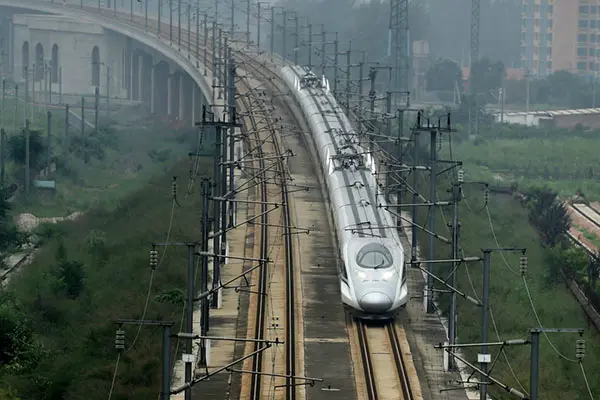China's economy underwent a tough year in 2016 and showed the world its resilience despite headwinds at home and abroad.
With the year coming to an end, let us take a look at the top 10 key words that tell the stories that made headlines in the world and China.
G20
President Xi Jinping addresses the media on Sept 5 after the G20 Summit in Hangzhou, Zhejiang province. Photo: China Daily
Under the theme of "Toward an Innovative, Invigorated, Interconnected and Inclusive World Economy," this year's G20 Summit was held on Sept 4-5 in the eastern Chinese city of Hangzhou.
China has demonstrated unswerving commitment to globalization, more specifically to defending free trade and cross-border investment and business cooperation during the summit.
AIIB
Chinese President Xi Jinping addresses the opening ceremony of the Asian Infrastructure Investment Bank (AIIB) in Beijing, capital of China, Jan 16, 2016. Photo: Xinhua
After three years in the making, the Asian Infrastructure Investment Bank (AIIB) officially opened for business on Jan 16, 2016.
President Xi called AIIB's launch a 'historical moment' while addressing the event in downtown Beijing and said the bank could increase Asia infrastructure investment effectively and promote regional interconnection and economic integration, which will have a positive effect on Asian and global economy.
Lou Jiwei was elected as the first chairman of the AIIB council. Jin Liqun was elected the first AIIB president.
Supply-side reform
A worker at a steel plant in Tangshan, North China's Hebei provine. Photo: VCG
President Xi Jinping said China's emphasis in 2016 would be on supply-side reform, or a package of supply-side policies to release new demand and boost new productivity.
He was speaking at the conclusion of the Central Economic Work Conference, which was held along with the Central Urban Work Conference in December 2015.
The country has made great efforts to fulfill five major tasks: cutting excessive capacity, destocking, deleveraging, reducing corporate costs and shoring up the economy's weak links this year.
A list of key economic data released on Dec 13, including industrial output and fixed-asset investment, pointed to stabilization and restructuring progress in the economy.
Internet plus strategy
The Mijia rice-cooker, unlike traditional ones, can be connected to a smartphone via the internet. Photo: China Daily
China's internet industry has grown exponentially in recent years. As of June this year, there were 710 million internet users across the country, accounting for 51.7 percent of its total population, exceeding the global average by 3.1 percentage points.
Internet Plus, an action plan, was first presented in the Government Work Report in March, 2015. It aims to integrate the internet with traditional industries and fuel new engines of economic growth.
Under the strategy, conventional industries will be upgraded by integrating new internet and information technology.
Pension fund
An elder shows her social security card in Nantong city, Jiangsu province, March 30, 2016. Photo:IC
China's pension fund assets totaled 3.99 trillion yuan at the end of 2015, according to data from the Ministry of Human Resources and Social Security.
On May 1, the national guideline to regulate the management of the pension fund took effect. It was the first of its kind issued by the central government.
The guideline allows the country's pension fund to invest in more diversified products with higher risks, such as stocks and private equity funds.
Real estate
Homebuyers visit a real estate show in Beijing. Photo:China Daily
China's real estate sales have reached 10 trillion yuan ($1.48 trillion) in the first 11 months of 2016, China's National Bureau of Statistics announced on Dec 13.
The sales have surged 37.5 percent year-on-year, with a 24.3 percent growth in floor area sales. China's annual property sales have surpassed the GDP of South Korea ($1.38 trillion), Australia ($1.34 trillion), and Russia (1.33 trillion), in 2015.
More than 20 major Chinese cities have introduced or resumed property market curbs since autumn as home prices have risen too sharply.
Overseas M&A
A Chinese national flag and a company flag fly in front the logo of China National Chemical Corporation at the company's headquarters in Beijing, Mar 24, 2015. China National Chemical Corp purchased Swiss-based Syngenta AG for about $43 billion in 2016. Photo:IC
China has surpassed the US as the largest source of outbound mergers-and-acquisition activity as a built-up mainland looks for other investment opportunities overseas.
According to Dealogic, in the first nine months of the year the total value of mergers and acquisitions (M&A) by Chinese companies jumped 68 percent year-on-year to $173.9 billion. It was the first time China has done more deals than the US. Dealogic said the US had been the top cross-border acquirer since 2008.
SDR
A photo shows five major currencies in the basket of SDR. Photo:VCG
Chinese yuan or the renminbi (RMB) has been included into the basket of special drawing right (SDR) of the International Monetary Fund (IMF) since Oct 1, marking a milestone in the internationalization of the Chinese currency.
Shenzhen-Hong Kong stock connect
A Chinese investor smiles at prices of shares (red for price rising) at a stock brokerage house in Haikou city, Hainan province, March 23, 2016. Photo:IC
China's stock connect between Shenzhen and Hong Kong started on Dec 5, following the successful launch of the Shanghai-Hong Kong stock link in 2014, further opening up the country's capital market.
High-speed rail
A train pulls into a station in Luoyang city, Henan province, June 30, 2015. Photo:IC
Shanghai maglev train (268 mph) and Harmony CRH380A (236 mph) both come from China and are ranked as the second and third fastest train in a list released by The Telegraph.
In 2015, overseas sales of CRRC, the country's railway vehicle and equipment exporter, reached 26.57 billion yuan ($3.86 billion), up 67 percent year-on-year, and accounted for 7 percent of total sales. It is seeking to boost the figure to 35 percent by 2025 (that is, the end of the 14th Five-Year Plan).
(CHINA DAILY)
 简体中文
简体中文

